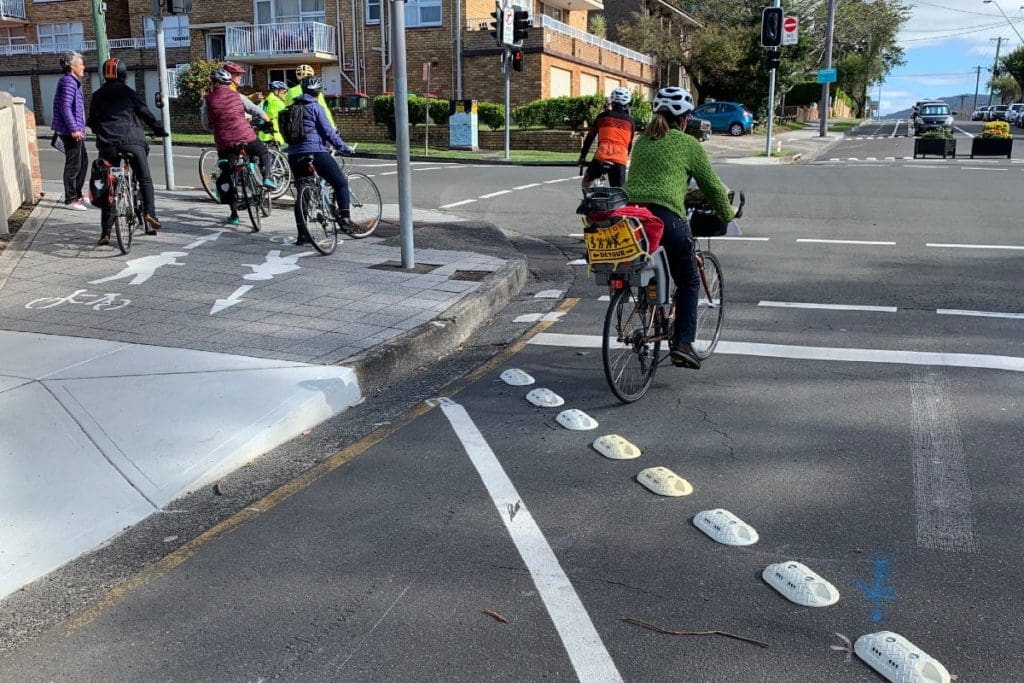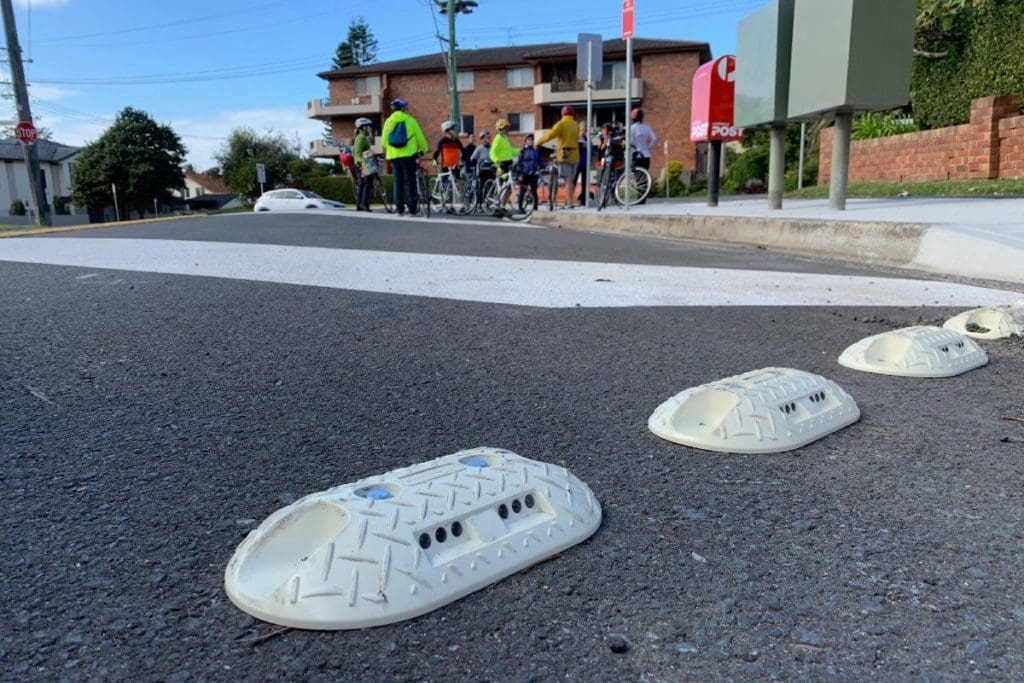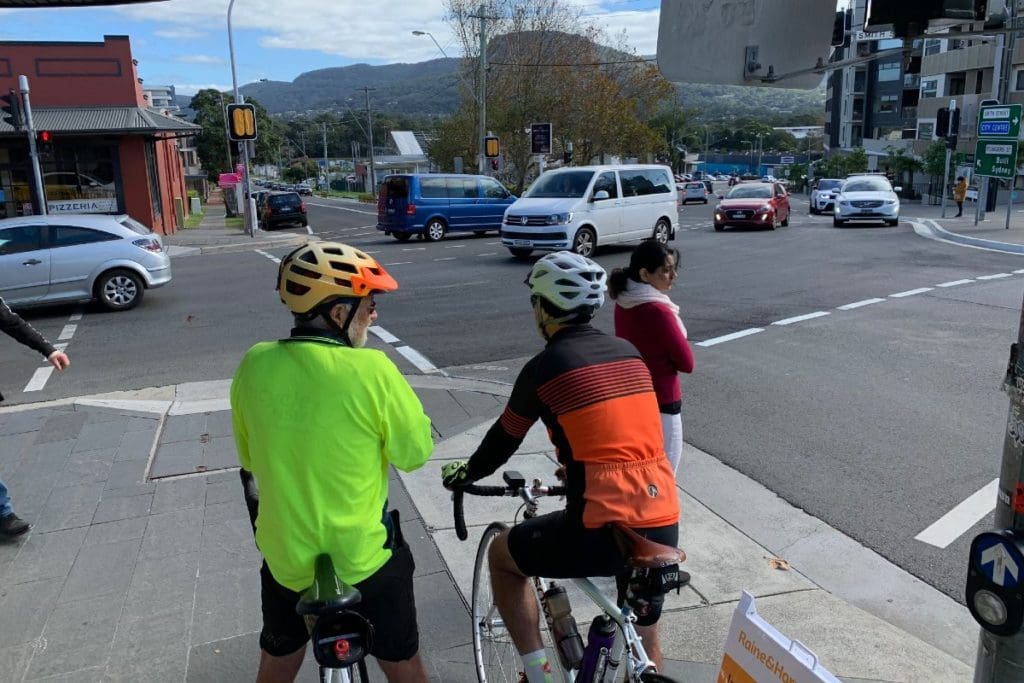Tenuous Infrastructure – The Sequel

Wollongong, NSW
Last month I wrote an extensive article here about some new ‘temporary’ infrastructure being trialled in my home town of Wollongong NSW.
I began by saying that I didn’t want to make a habit of writing about back-yard stories. I intend for the Micromobility Report to cover stories from around the world, with a particular focus on Australia.
However since posting the original story, upon seeing the next section of the new infrastructure being installed, I felt compelled to write more.
On Saturday 29th May a group of concerned cyclists organised by Werner Steyer, President of the Illawarra Bicycle Users Group (IBUG) gathered to ride the new infrastructure and produce an informal audit report.
I’m not going to go into any details of the report, which at the time of writing this is still in draft format and not ready for publication. I’ll add a link later after it has been completed.
Rather I’ll simply make some general observations and then pose some questions, because this situation occurs time and time again throughout Australia.
In summary, of the many faults with the new designs, the critical ones are the treatment of intersections. In every case, cyclists are expected to make a sharp dog-leg onto the footpath which is often narrow and already crowded with a variety street furniture. Then they’re expected to either cross via an unmarked crossing or press the pedestrian button at signalised intersections and wait for another traffic light cycle.

The logical, safer, more user-friendly design would be to let the cyclists continue straight ahead on the road through every intersection.
This design trivialises and patronises cyclists and other micromobility users. It assumes that it’s perfectly acceptable for them to have vastly longer wait times. It assumes that motor vehicle traffic is more important and must have the fastest route through at all times.
Already, the poorly designed new infrastructure has directly resulted in one cyclist being hospitalised.

With all new cycling infrastructure, the devil is in the detail. The overall concept and location of the Smith St / Kembla St / Harbour St protected bike lane is good. It fails because of details in its execution.
The sad irony for cyclists is that, according to advice I have received, the NSW law requires cyclists to use designated cycling infrastructure where it exists.
So, cyclists face a choice. Use something that’s dangerous and pathetically slow. Or risk arrest for staying on the road.
In some ways, they’re even worse off than before. After a decade of campaigning, a dream is turning into a nightmare.

How can such a poor outcome happen? In my opinion it’s a combination of restrictive design rules, which to be fair to the local government are beyond their jurisdiction, but made far worse through whatever combination of lack of care, incompetence and a failure to listen to user groups by the relevant transport officers at the local government level.
As a general rule I see this everywhere I travel across Australia. Local governments who don’t have much cycling infrastructure on the ground, tend to make terrible design decisions. They gradually get better over time as they become more experienced, take it more seriously and, most vitally, are pressured every step of the way by pro-active user groups who almost always have more expertise than the ‘experts’ but are often ignored.
Why does it have to be such a long and painful process?
Why can’t those local governments with less experience and competence learn from those who are doing it so much better?
When are we finally going to get serious about designing and implementing good infrastructure throughout all of Australia and not just in a tiny minority of locations?
Join the Conversation:
Do you have any answers to the above questions? We would love your insight, please comment below.
